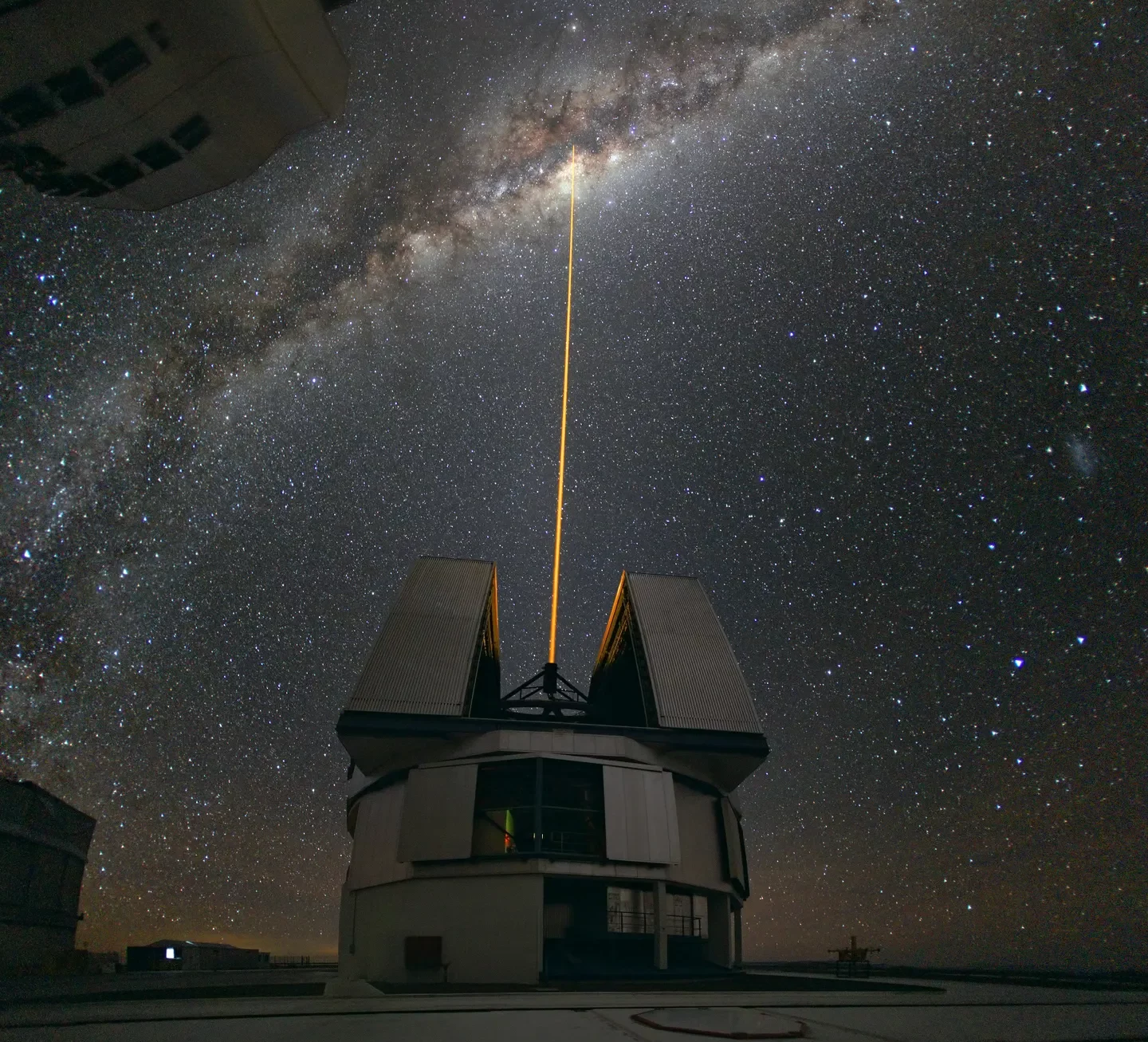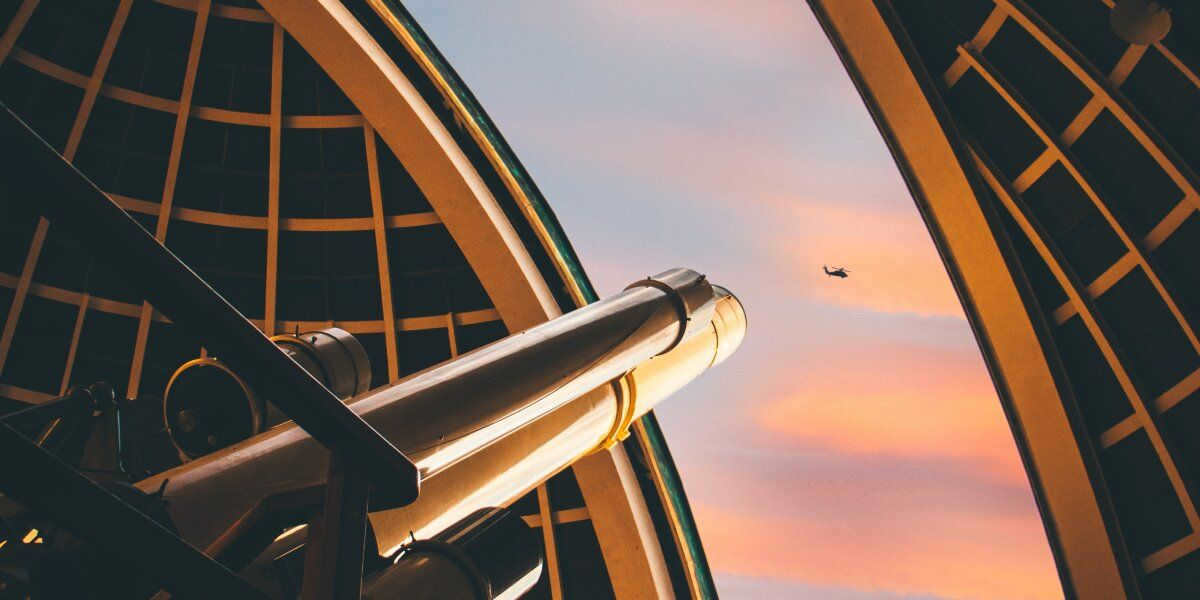
In a metropolitan area, it is quite uncommon to catch a glimpse of a star in the night sky, particularly during the autumn season. However, if you have a yearning to do so, you can fulfill this desire by visiting one of the many planetariums or observatories in Moscow. We have compiled a list of five such locations that remain open even throughout the fall and winter months.
The Moscow Planetarium
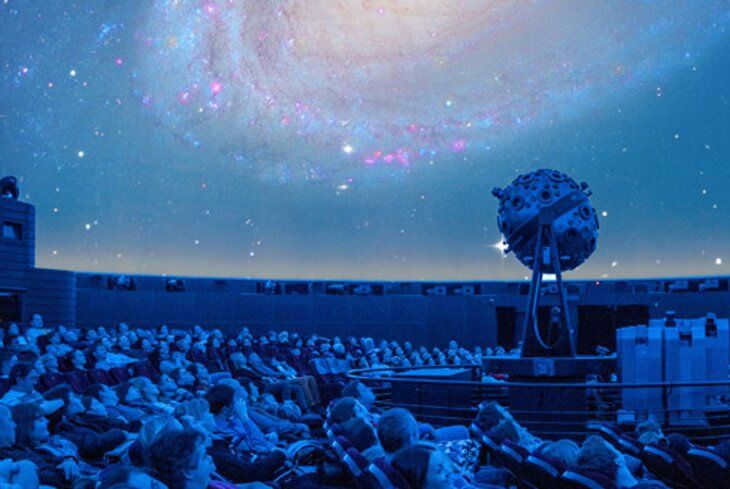
In Moscow, there are several observatories and planetariums where you can observe the stars. One of them is open for telescope viewing from May to September, while the rest of the year offers large and small star halls equipped with starry sky projectors, a 4D cinema, a museum, and interactive spaces. The highlight of this place is the large hall, which houses the largest dome in Europe with a diameter of 25 meters. This dome showcases over 9,000 stars, providing an accurate representation of the night sky over a 10,000-year period.
If you’re interested in visiting, the address is Sadovaya-Kudrinskaya St., 5, bld. 1. The price range for admission is 100-900 rubles.
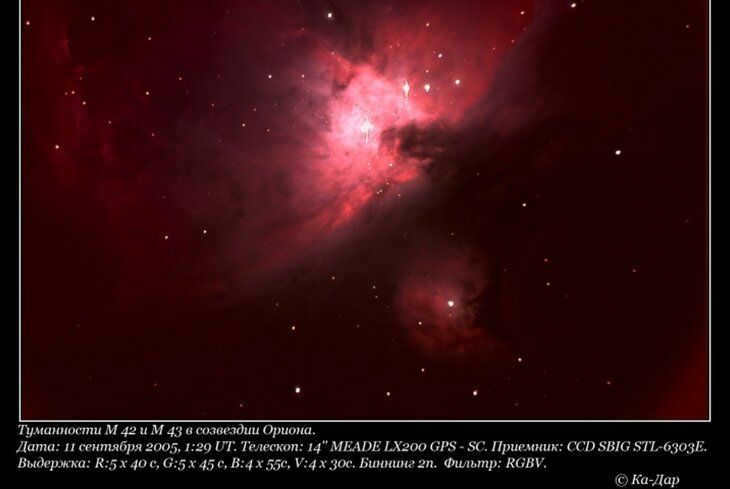
This is a unique private observatory, owned by the Ka-Dar Astronomy Support Fund. Unlike other observatories, it does not operate during the summer months, specifically from June 1st to August 1st, due to the prevalence of light nights. Guided tours are conducted in small groups of ten people and typically last around two hours, with the majority of the tour dedicated to telescope observation. It’s important to note that these tours are only conducted if the temperature is above minus 15 degrees. So don’t miss your chance to visit!
Located in the Domodedovo district, in the quaint village of Kuzminskoye, this observatory offers a unique experience for astronomy enthusiasts. The price for tours starts from 800 rubles, making it an affordable and educational outing for all.
CDRA Planetarium
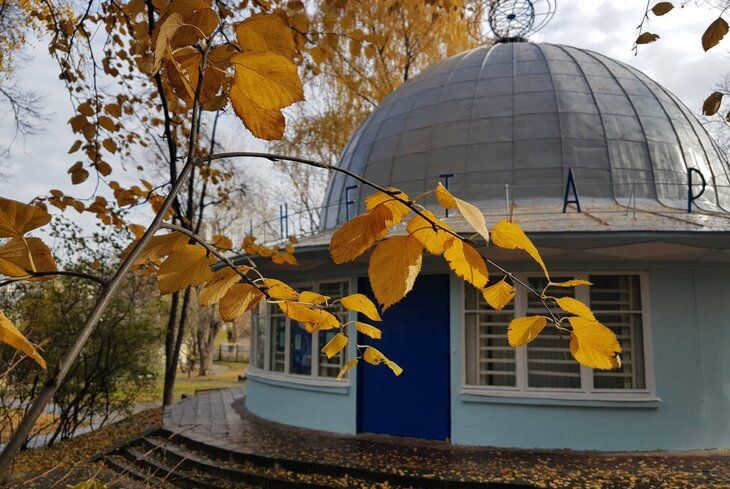
This particular planetarium lacks an observatory, so you won’t be able to have a look through a telescope here. However, you can still enjoy observing the stars with the help of a projector. The staff organizes both group and individual lectures, as well as excursions that provide information about the planets and the universe as a whole. You can even attend “Astronomical evenings” where various cosmic phenomena are discussed.
Location: Suvorovskaya Pl., 2, pp. 32
Price: starting from 200 rubles
The Palace of Pioneers in Moscow’s Sparrow Hills
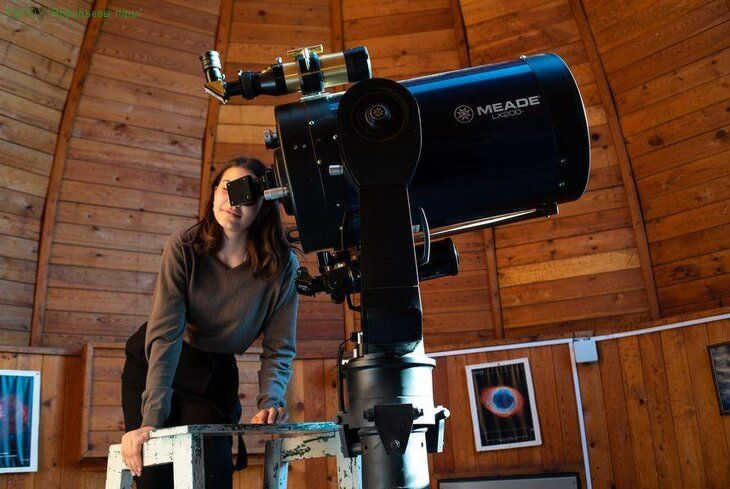
The Moscow observatory is an ancient facility that caters to a young audience. Occasionally, the observatory hosts open days for both children and adults, as well as special shows that coincide with significant cosmic events. To attend such events, stay updated on the website’s news section.
Location: 17 Kosygina St., Bldg. 1.
Admission: free of charge
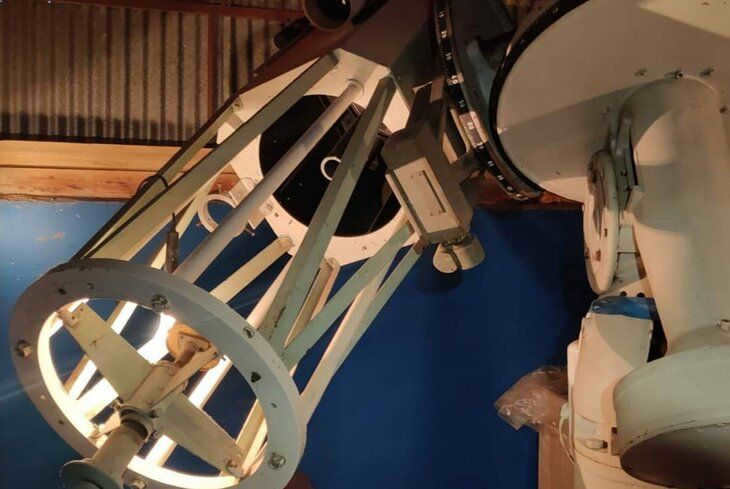
This is a privately owned amateur observatory that operates year-round. According to the proprietors, they offer guided tours of the night sky in the Moscow region. Prior arrangements must be made by contacting the owner at +7 (903) 161-71-22.
Location: Domodedovo, Vostryakovo microdistrict, Odintsovskaya street, 3a
Price: To be determined based on agreement
For more information about the latest movies, music, and premieres, visit our public page on “VKontakte”
More to Explore
 Discover 7 upcoming exhibitions in Moscow that are a must-visit
Discover 7 upcoming exhibitions in Moscow that are a must-visit Make the most of the remaining hot days with these 5 end-of-summer activities
Make the most of the remaining hot days with these 5 end-of-summer activities Explore contemporary art for free at these 10 galleries in Moscow
Explore contemporary art for free at these 10 galleries in Moscow
Latest Updates
- Renowned author Stephen King recently sold the rights to his captivating short story “The Man Who Didn’t Shake Hands” for a mere dollar. The sale took place at 1:24 p.m.
- In celebrity news, it has been reported that Britney Spears and Sam Asghari have decided to part ways after just 14 months of marriage. The announcement came at 12:57 p.m.
- Hollywood actor Bradley Cooper is facing allegations of anti-Semitism due to his portrayal of a character with a false nose in the movie “The Maestro”. The controversy arose at 12:40 p.m.
- Pop sensation Charli XCX has delighted fans by releasing a music video for her latest single, which is featured on the popular “Barbie” soundtrack. Fans were thrilled when the video premiered at 11:25 a.m.
- Rotten Tomatoes, the renowned film review aggregator, has recently unveiled its list of the top 25 movies of the past 25 years. Among the notable titles are “Parasites” and “The Dark Knight”. The announcement was made on August 16th at 7:18 p.m.
- A popular breakfast festival called Summer BreakFest has recently concluded, serving a staggering 85,500 breakfasts. The festival organizers shared the impressive results on August 16th at 2:21 p.m.
- K-pop sensation BTS has revealed their plans to end their solo activities and reunite as a group once again. Fans can look forward to their upcoming group performances. The announcement was made on August 16th at 2:20 p.m.
- Alec Baldwin could potentially face charges once again in connection with the tragic death of a cameraman on the set of the film “Rust” on August 16th at 13:15.
- Take a glimpse at the first teaser trailer for the highly anticipated seventh season of “Rick and Morty” released on August 16th at 13:05.
- Illusion will be hosting a special screening of Hirokazu Koreeda’s acclaimed film “The Middlemen” on August 16th at 12:00.
- “It’s like graduating from high school,” expressed Millie Bobby Brown when discussing the conclusion of the hit series “Stranger Things” on August 16th at 11:35 pm.
- Darren Kent, known for his role in Game of Thrones, sadly passed away at the young age of 36 on August 16th at 11:18.
All materials on the m24.ru website are protected by copyright and related rights in accordance with the laws of the Russian Federation. To use any materials from the website, you must provide a link to m24.ru. The editorial board is not responsible for the content and opinions expressed in the comments of readers and news articles based on readers’ reports.
The online media outlet City News Channel m24.ru is registered with the Federal Service for Supervision of Communications, Information Technology and Mass Media. The media registration certificate number is FS77-53981, dated April 30, 2013.
The mass media network edition “City Information Channel m24.ru” was established with the financial support of the Moscow Department of Mass Media and Advertising. (C) Moscow Media JSC.
Thecity.m24.ru website may include content sourced from Facebook and Instagram, both of which are online platforms owned by Meta Platforms Inc. Unfortunately, Meta Platforms Inc. is currently prohibited in Russia.
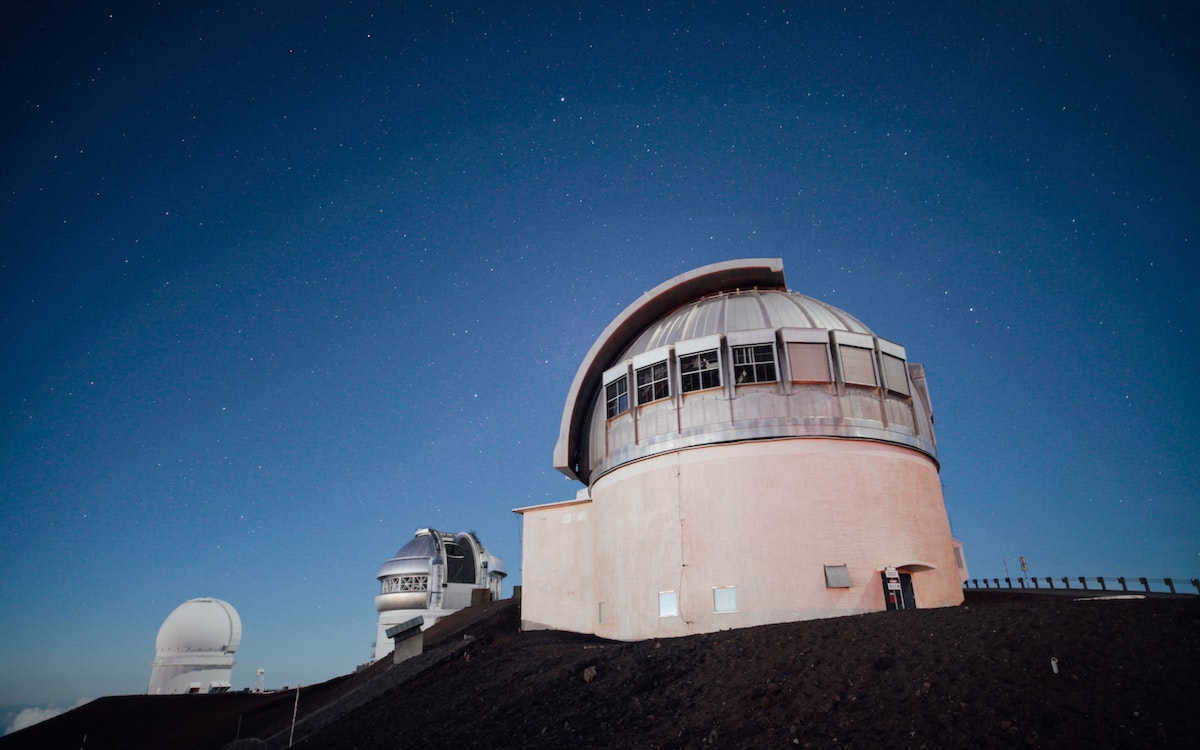
Advanced technologies enable scientists to explore the most distant corners of the universe right from the comfort of our planet. We have compiled a list of state-of-the-art observatories where astronomers observe exoplanets, black holes, and dying stars.
Since 1990, scientists have confirmed the presence of over 4,000 planets beyond our own solar system. To investigate outer space, researchers collaborate with entrepreneurs, research universities, and philanthropists worldwide to construct cutting-edge observatories. In this article, we have gathered information on contemporary observatories, including the location of the largest telescope and the Chinese researchers’ decision to relocate an entire village.
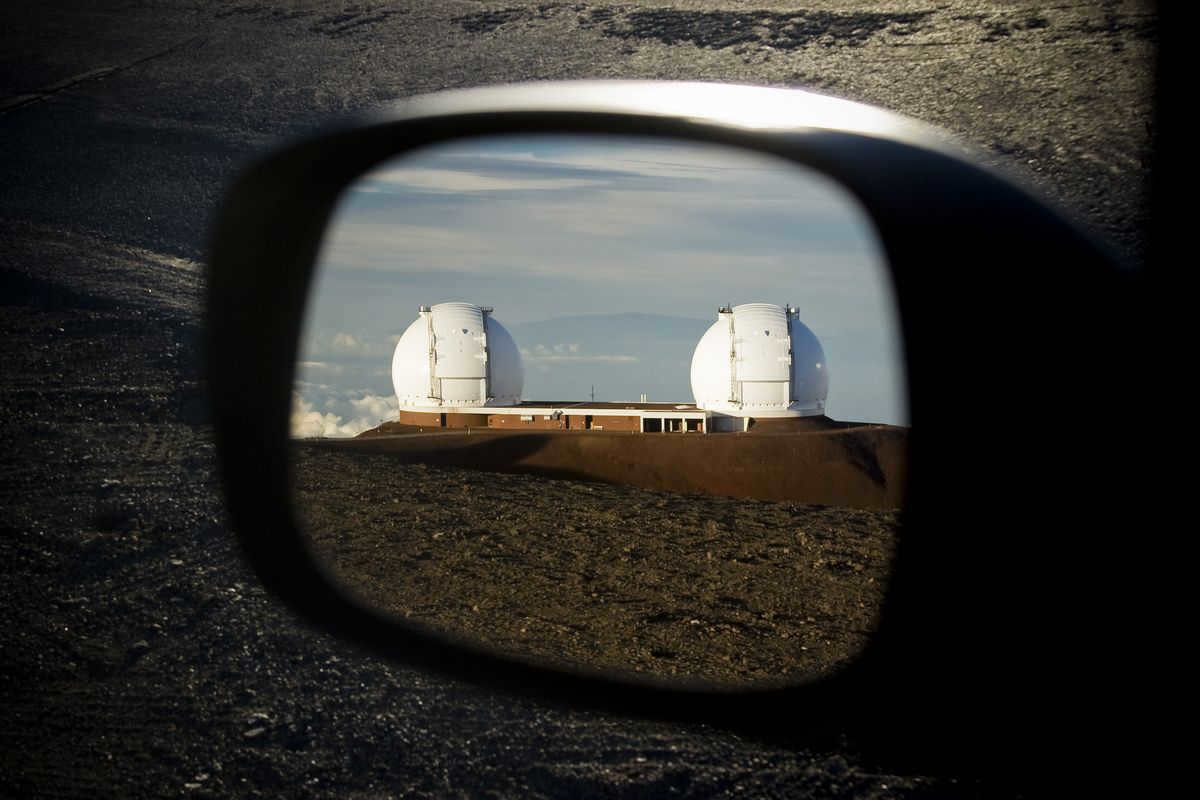
The Keck Observatory is a facility that is part of the W. M. Keck Foundation, which was established in 1954 by William Keck, an entrepreneur and philanthropist who was dedicated to supporting scientific, engineering, and medical research. Situated on the summit of Mauna Kea, an island in Hawaii, the observatory is positioned at an elevation of 4,145 meters above sea level. At this location, there are two telescopes that reach a height of eight stories and have the remarkable ability to detect targets with nanometer accuracy. These telescopes are capable of tracking objects for extended periods of time, and each one weighs an astonishing 300 tons. Additionally, the mirrors of the telescopes are composed of 36 hexagonal segments, making them truly impressive pieces of technology.
Before 2007, when the Grand Canary Telescope was introduced in Spain, the Keck telescopes held the title of the world’s largest. Their method of planet discovery relies on the Doppler effect, which involves measuring variations in starlight. The observatory’s scientists have made remarkable exoplanet discoveries, including the youngest known exoplanet, LkCa 15 b, thanks to these telescopes.
The Keck Observatory made history by being the first to capture images of a planetary system orbiting a star that is not the Sun. In 2017, NASA and the owners of the observatory entered into a five-year partnership (2018-2023) to jointly explore space. Prior to this collaboration, Keck scientists played a crucial role in NASA’s Kepler/K2 mission by providing high-resolution photographs to verify and document the existence of numerous exoplanet orbits. Additionally, the observatory’s telescopes successfully detected the initial indications of water vapor on one of Jupiter’s 79 satellites, a finding that was later confirmed by NASA scientists in 2019.
The South African Astronomical Observatory
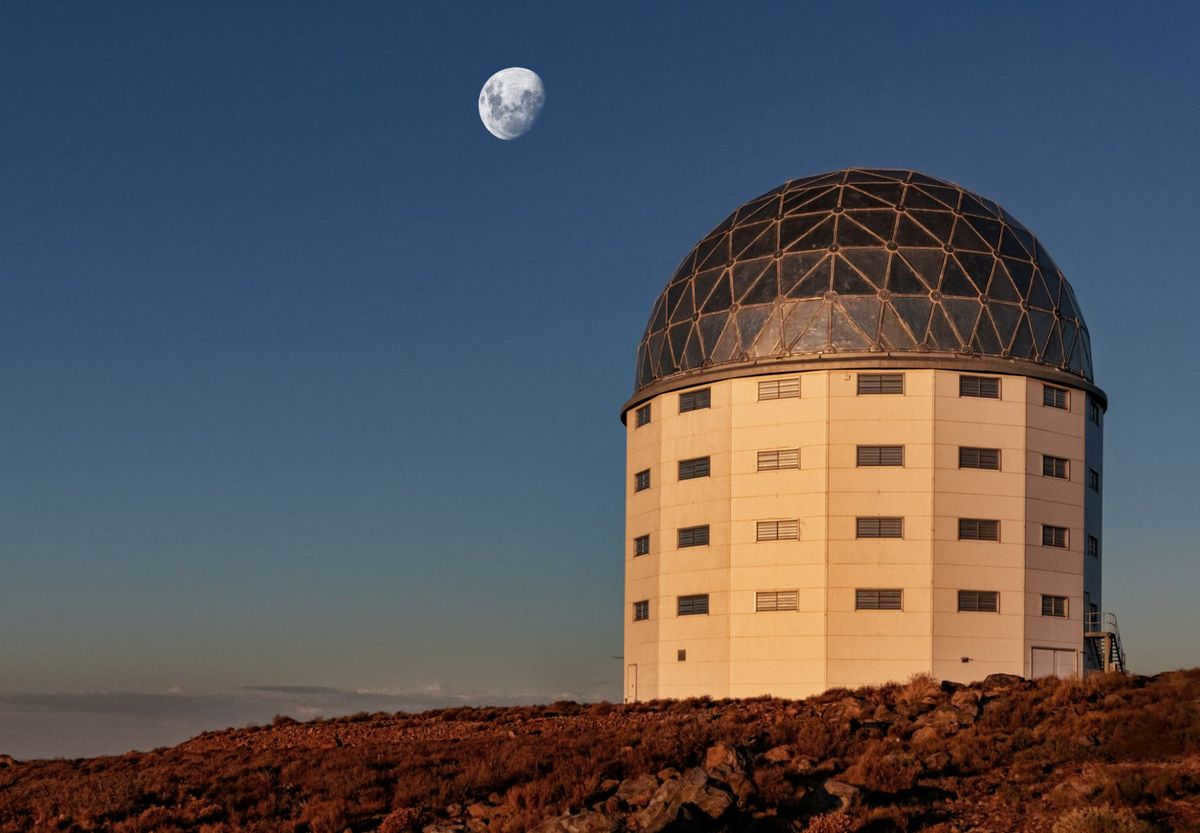
Cape Town is home to the South African Astronomical Observatory (SAAO), which stands out as one of the most advanced space exploration facilities worldwide. Administered by the National Research Foundation of South Africa, the observatory’s telescopes are primarily situated in Sutherland, some distance away from the main research center.
Among the notable telescopes found on the observatory premises are SALT and Lesedi, both of which showcase cutting-edge technology.
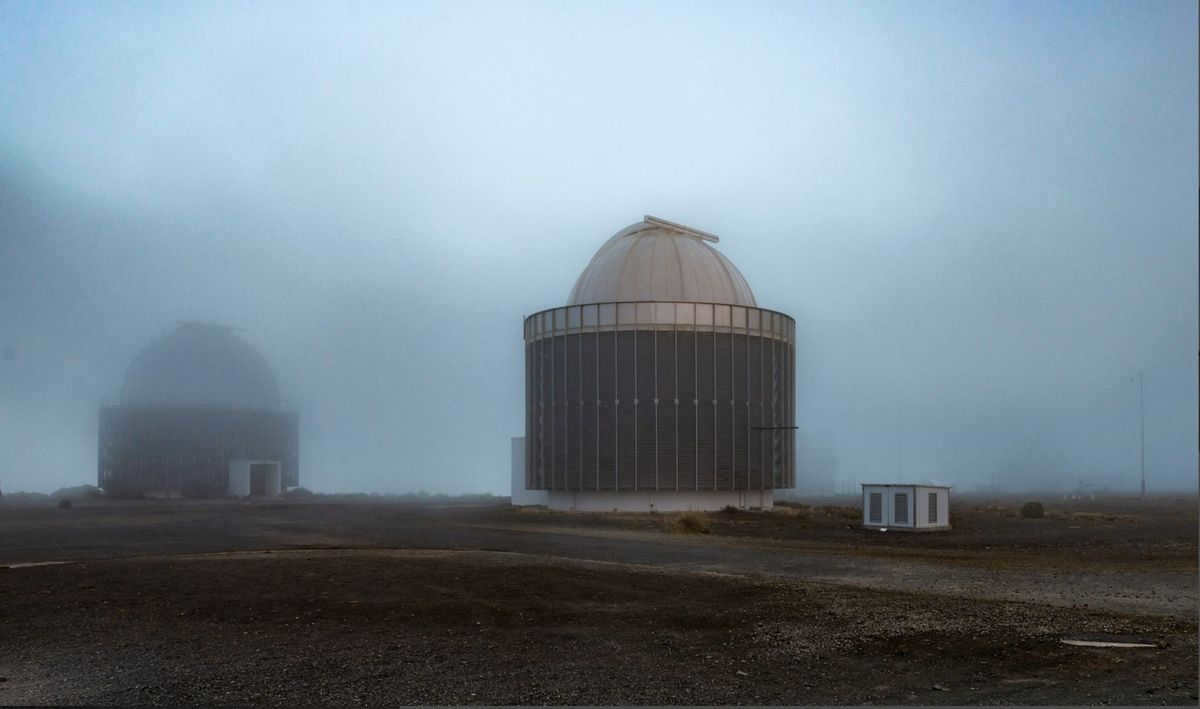
In October 2017, SAAO participated in a collaborative effort with 70 other scientific observatories to study the aftermath of the collision between two neutron stars. This event occurred shortly after the detection of gravitational waves by the U.S. LIGO observatory and Europe’s Virgo antenna.
LIGO Laser Observatory
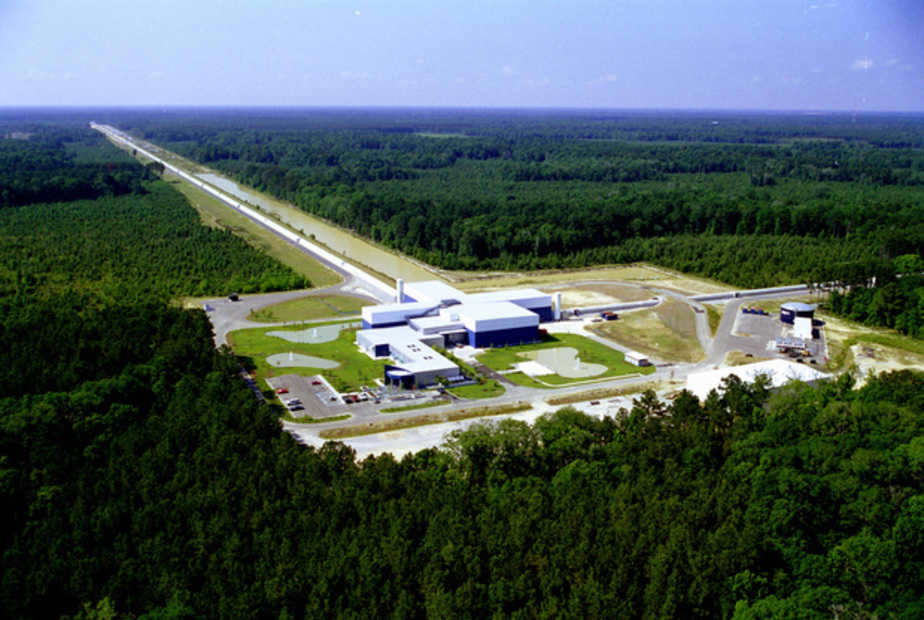
The LIGO observatory, which is funded by the US National Science Foundation, became widely known in 2016 when scientists at the facility successfully detected a powerful gravitational surge caused by the collision of two black holes. This groundbreaking discovery confirmed the existence of gravitational waves. LIGO consists of the Hanford and Livingston observatories and has attracted researchers from around the globe. Its main focus is on observing cosmic gravitational waves, a concept originally predicted by Einstein’s general theory of relativity in 1916.
Paranal Observatory
The Paranal Observatory is a state-of-the-art astronomical observatory located in the Atacama Desert in Chile. This world-class facility is operated by the European Southern Observatory (ESO) and is home to some of the most advanced telescopes in the world. The observatory’s location in the Atacama Desert provides excellent observing conditions due to its high altitude, clear skies, and minimal light pollution. The Paranal Observatory is renowned for its groundbreaking research and discoveries in the field of astronomy, and it continues to push the boundaries of our understanding of the universe.
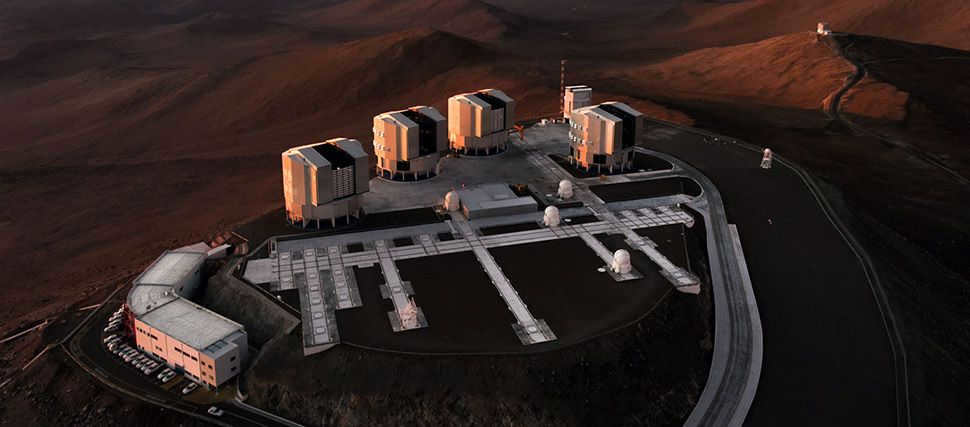
The European Southern Observatory (ESO) complex, established in 1999 in Chile, includes the Paranal Observatory. With a rich history as one of the oldest astronomical research organizations, the ESO continues to provide invaluable contributions to the field.
Let’s take a chronological journey through the years of the observatory:
This telescope has already made a significant contribution to the exploration of the cosmos. Thanks to its capabilities, scientists were able to capture the first-ever images of exoplanets, monitor the orbital movements of stars around a black hole, and witness the afterglow of the most distant gamma-ray burst ever observed in 2005.
In addition to its scientific achievements, the observatory provides accommodation for the astronomers working at the facility. Inside, there is a sprawling garden with a swimming pool, a fully-equipped gymnasium, and a restaurant. The opulent surroundings even served as a filming location for the James Bond film, Quantum of Solace.
To offer a glimpse into this remarkable observatory, the European Southern Observatory website features a virtual tour that showcases its impressive array of giant telescopes.
“Sky Eye” in China
China is home to an impressive technological marvel known as the “Sky Eye.” This ground-based radio telescope, located in Pingtang County, Guizhou Province, is the largest and most sensitive of its kind in the world. The “Sky Eye” stretches over an area of 30 football fields and has a dish diameter of 500 meters, making it a truly remarkable piece of engineering.
The “Sky Eye” is designed to explore deep space and search for extraterrestrial life. Its large dish allows it to capture and analyze radio waves from distant galaxies, giving scientists a unique insight into the mysteries of the universe. It is equipped with highly sensitive receivers that can detect even the faintest signals, making it a crucial tool in the search for intelligent life beyond our planet.
Not only is the “Sky Eye” an important scientific instrument, but it is also a symbol of China’s technological progress and ambition. Its construction was a massive undertaking, involving thousands of workers and multiple years of planning and execution. The completion of the “Sky Eye” demonstrates China’s commitment to pushing the boundaries of scientific exploration and innovation.
Visitors to the “Sky Eye” can marvel at its sheer size and impressive capabilities. The observatory is open to the public, allowing people to learn about the universe and the latest discoveries in space exploration. It is a testament to human curiosity and the desire to understand our place in the cosmos.
In conclusion, the “Sky Eye” in China is a groundbreaking technological achievement that represents the country’s commitment to scientific advancement and exploration. Its size and capabilities make it a truly unique and remarkable instrument, providing scientists with valuable insights into the mysteries of the universe.
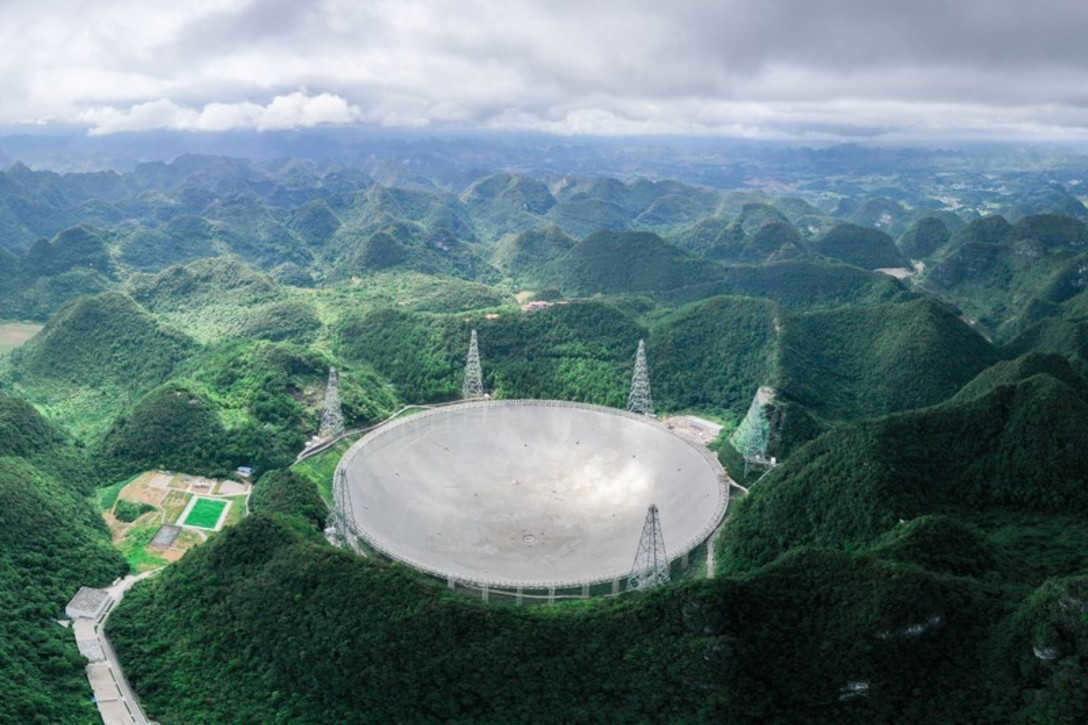
The FAST spherical telescope is a cutting-edge tool for exploring space. It is a collaborative effort between the National Astronomical Observatory of China (NAOC) and the Breakthrough Initiatives program led by Russian entrepreneur Yuri Milner. The idea for this radio telescope was first conceived in 1994, but it wasn’t until 2016 that it was finally constructed and launched into space.
Locating a suitable site for building the telescope proved to be a challenging task, taking a decade of research and planning. The Chinese government made the decision to relocate 65 villagers from the Davodang Depression in Guizhou Province and an additional 9,110 individuals within a five-kilometer radius of the telescope’s location, in order to create a radio silence zone and ensure optimal conditions for the telescope’s operation.
The diameter of the telescope is equivalent to half a kilometer (approximately 30 soccer fields) and it reaches a depth of 140 m. It is composed of 4,450 small triangular panels that have the ability to move, allowing for observations to be made from various angles. The telescope functions by capturing radio waves emitted by objects in outer space. Due to its immense size, FAST has the capability to gather signals from the most distant regions of space. Scientists have reported that, during a trial run, the telescope successfully detected radio waves originating from three rapidly rotating stars.
The developers are confident that the telescope can aid in the discovery of gravitational waves and further investigate the brief bursts of sound emitted by deceased stars. By as early as August 2021, FAST will serve as a research platform for astronomers worldwide.
Observatory at Roque de los Muchachos
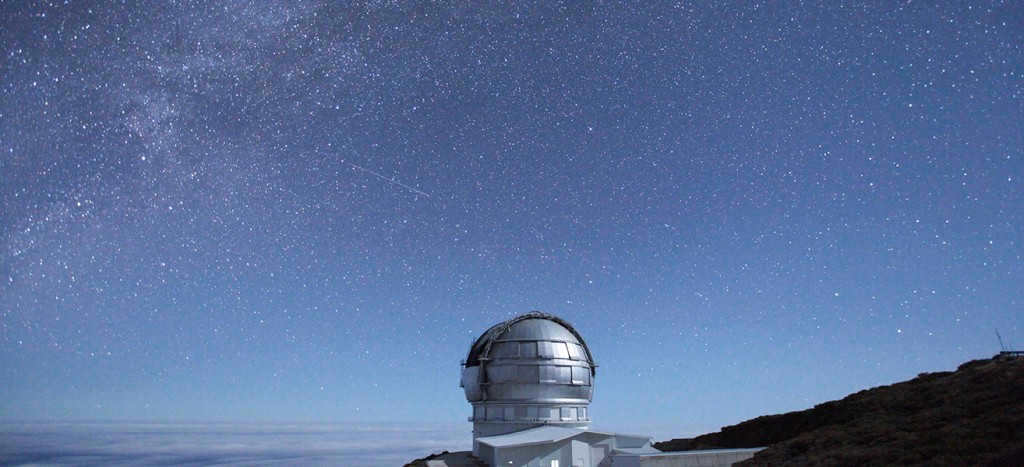
The Roque de los Muchachos Observatory is situated in the Canary Islands at an elevation of 2,396 meters above sea level. It is overseen by the Canarian Institute of Astrophysics, which is situated nearby on the island of Tenerife. The Teide Observatory, which has relocated some of its research to Roque de los Muchachos, is also located there.
The observatory is home to a vast collection of telescopes from various countries. It is also the site of the largest telescope in the world, the Grand Canary Telescope. With its 10.4-meter mirrors, it is capable of capturing the faintest light emitted by distant celestial objects.
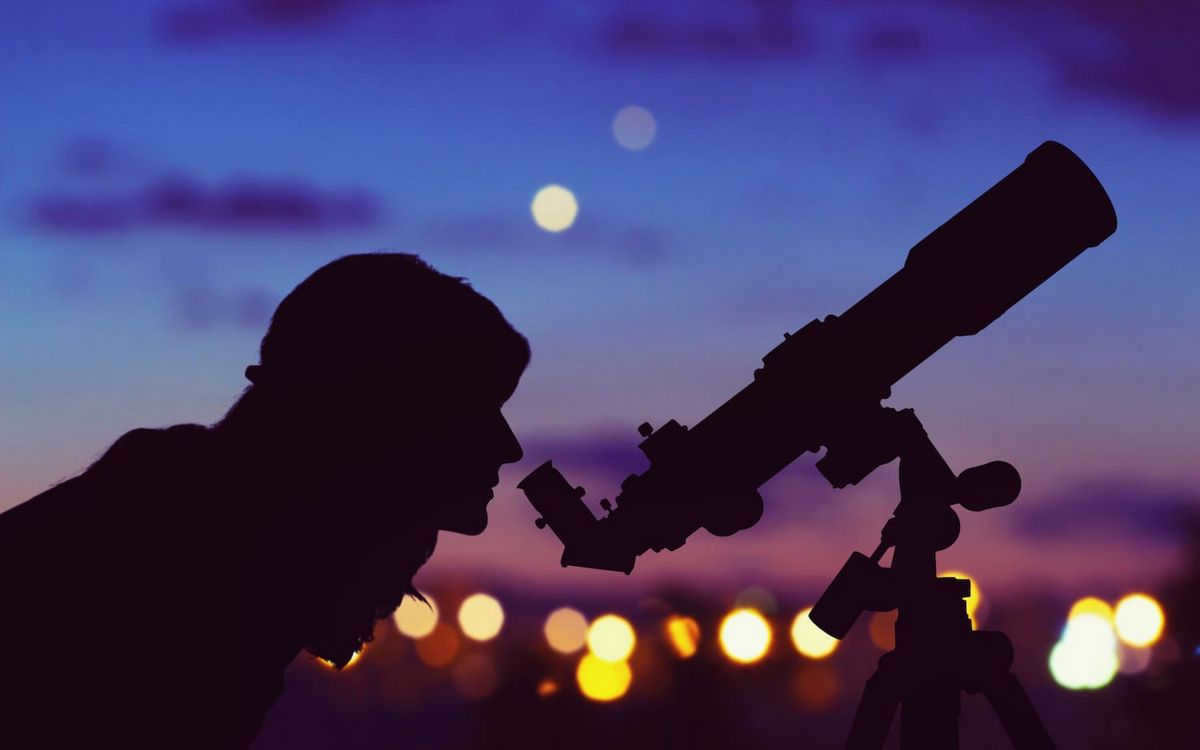
Futurists have long been making promises about the future of space tourism and the possibility of traveling to Mars. While we eagerly await the commencement of interplanetary travel, we invite you to explore the vastness of space right here on Earth.
A planetarium is a remarkable tool that allows us to observe the night sky, track the movement of planets, comets, satellites, and other celestial objects. Many scientific and educational institutions have dedicated planetariums where visitors can not only admire the stunning starry panorama, but also learn about the mysteries of the cosmos. RBC Trends has curated a list of the top planetariums in Russia. Additionally, we have included some websites that allow you to stargaze from the comfort of your own home.
The first planetarium was established in Munich in 1925, and four years later, in 1929, a planetarium was built in the Soviet capital. To commemorate its inauguration, Vladimir Mayakovsky penned a poem entitled “Proletarian, proletarian, come to the planetarium”. Even back then, the planetarium held lectures beneath the projection of the celestial night sky. Its opening sparked a surge of public interest in the exploration of space and the dissemination of astronomical knowledge.
Today, the Moscow Planetarium stands as one of the world’s largest. It offers courses for both children and adults, hosts lectures beneath an artificial starry sky, and arranges guided tours of the adjacent museum. Additionally, it houses an observatory where visitors can observe the Sun through a telescope on clear days. The Moscow Planetarium boasts two cinema halls that screen space-themed movies daily.
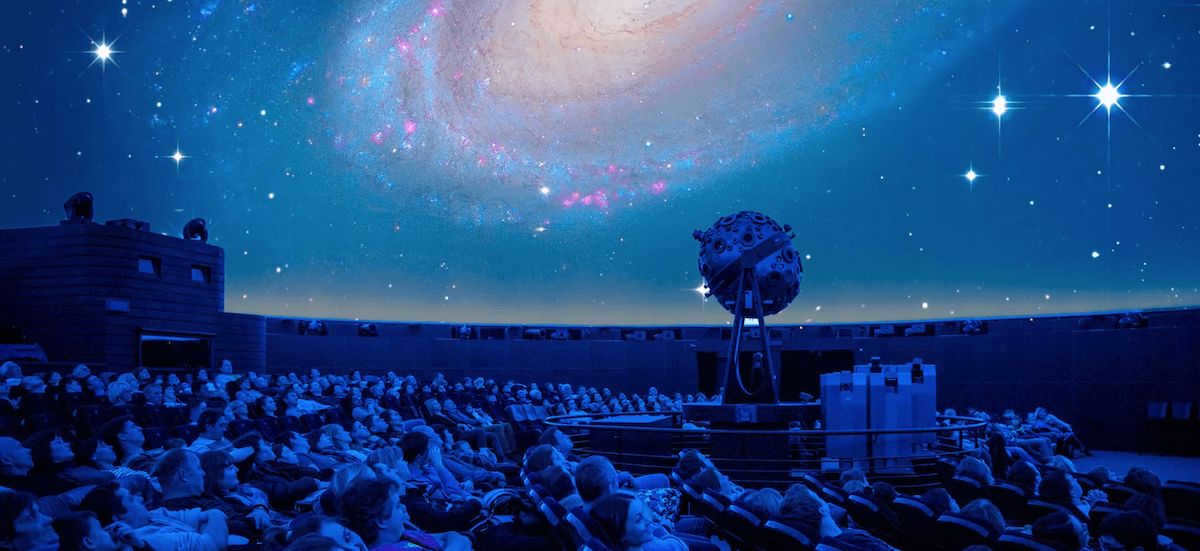
Planetarium Number 1 in St. Petersburg
The largest planetarium in the world can be found in St. Petersburg. It is situated in the building of Russia’s oldest gas holder. The entire complex spans an area of 4 thousand square meters. In addition to the dome itself, Planetarium Number 1 also features a museum showcasing space exhibits, an ice rink, and a cinema.
The dome, which displays planets and constellations, has a diameter of 37 meters. It is illuminated by 40 spotlights that project images of celestial bodies. The star images have a resolution of 256 pixels, allowing viewers to observe even the most distant space objects in exquisite detail.
The starry dome is constructed with a sloping design, ensuring that the celestial projection extends all the way to the floor. This unique feature not only allows visitors to fully immerse themselves in the projection, but also provides a picturesque backdrop for capturing stunning photographs. In addition to its visual appeal, the dome serves as a versatile space for various activities. During the day, lectures are held within the dome, offering educational experiences beneath the simulated night sky. In the evenings, the dome transforms into a venue for jazz concerts, providing a truly enchanting atmosphere for musical performances. Furthermore, the room situated below the starry dome is available for rental, offering couples the opportunity to spend a romantic evening in this extraordinary setting.
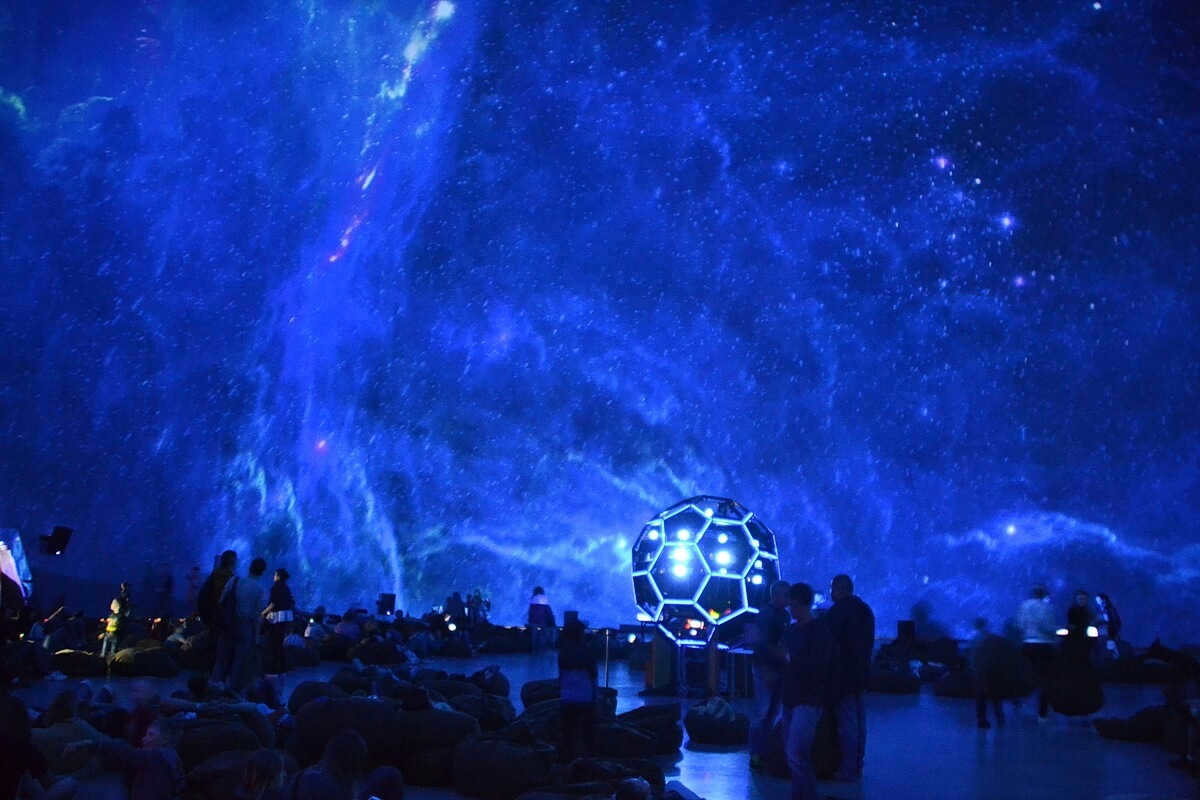
The Pulkovo Observatory
Established in 1839, the Pulkovo Astronomical Observatory has been a protected site by UNESCO for over a century. Situated in the outskirts of St. Petersburg, it is under the ownership of the Russian Academy of Sciences. The observatory houses its own research center, which is operated by a team of approximately 300 individuals, with researchers accounting for one-third of the staff. Covering a wide range of topics in modern astronomy, the facility focuses on areas such as celestial mechanics, physics, and stellar evolution.
Within the premises of the Pulkovo Observatory lies a museum as well as four telescopes. One of these telescopes, known as the solar telescope, offers the opportunity to witness the majestic Sun during favorable weather conditions. Visitors have the option to either reserve a private tour for a group or purchase an individual ticket for one of the scheduled events, all of which can be found on the official website. The majority of these guided tours include observational activities and cater to adults as well as high school students from both regular and specialized educational institutions. For those embarking on their initial visit, the staff strongly recommends obtaining a ticket for the 26-inch refractor, which conducts nightly observations whenever the sky is clear.
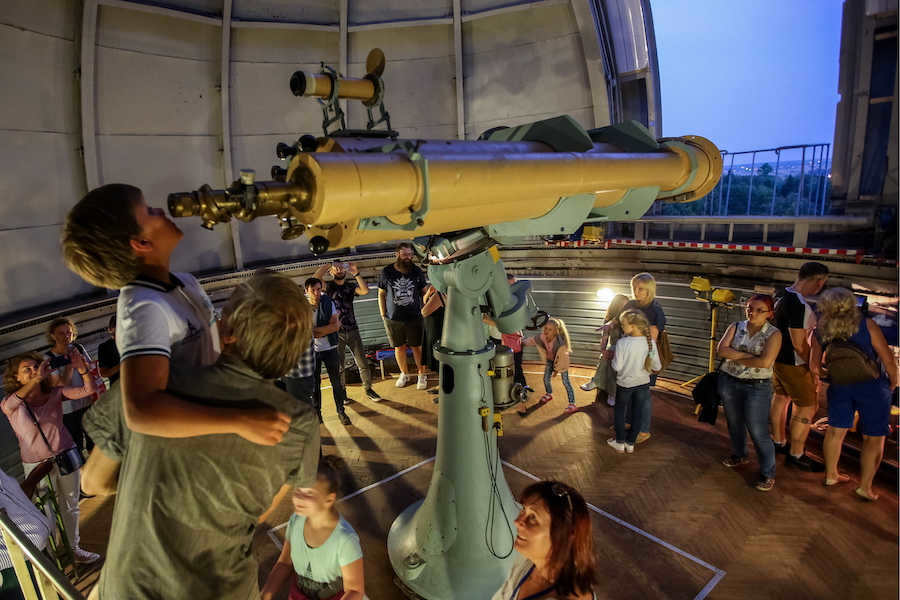
The Big Planetarium in Novosibirsk
Novosibirsk is home to the largest planetarium in the Asian region of Russia. The planetarium actively engages children in the field of astronomy, boasting over 20 children’s associations and a student body of approximately 1,000 individuals. Each year, the planetarium hosts the Siberian Astronomy Forum for schoolchildren and organizes children’s Olympiads periodically. Additionally, the complex houses a studio dedicated to producing full-dome movies, including original films like “Faces of the Sun” and “Myths and Legends of the Starry Sky.”
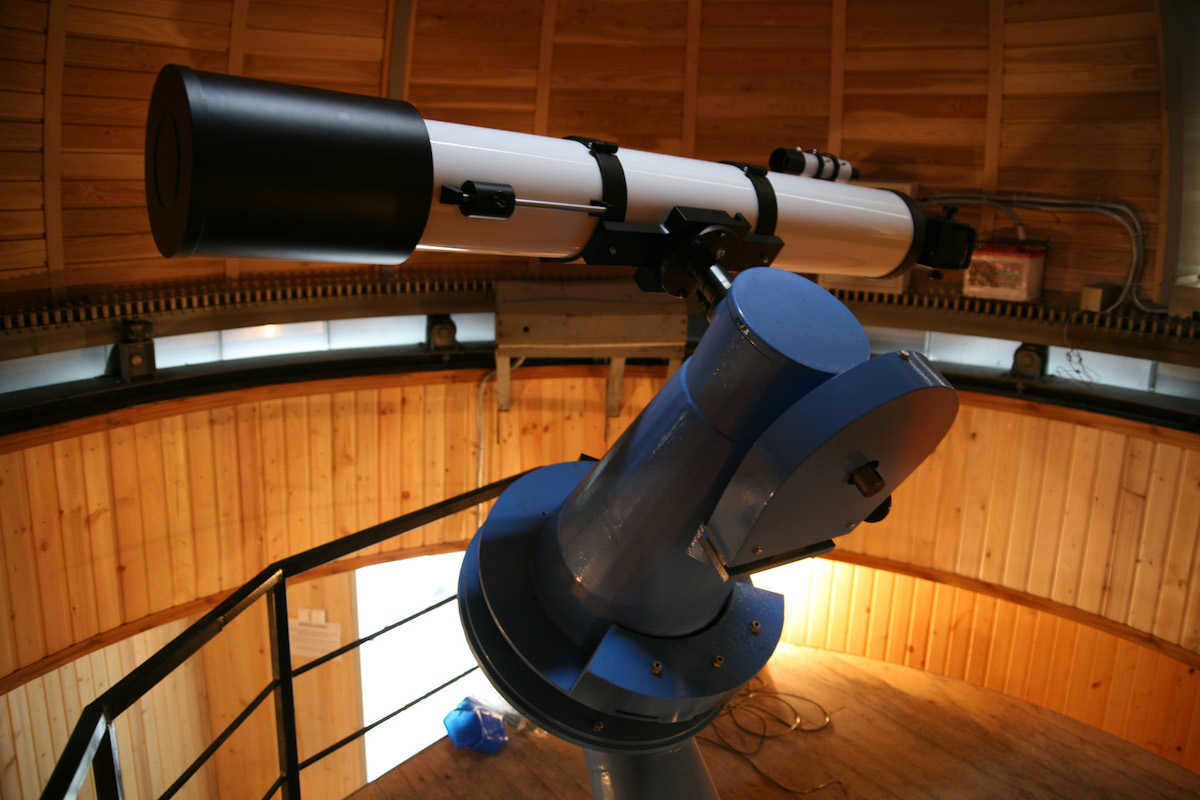
Kaluga Planetarium
Kaluga, the birthplace of Konstantin Tsiolkovsky, the pioneer of theoretical cosmonautics, houses a state museum dedicated to the study of space. As part of this museum complex, the Kaluga Planetarium was established in 1967. Utilizing advanced planetarium technologies, this facility offers visitors a truly immersive experience of being in outer space. Through its advanced equipment, the planetarium is capable of simulating various astronomical phenomena, such as eclipses, as well as providing a panoramic view of our galaxy. Furthermore, it offers a unique perspective of Earth, replicating what astronauts see from the window of a spacecraft. To enhance the immersive experience, full-dome programs are accompanied by the captivating music of a talented young Russian composer, Vitaly Baldychev.
The planetarium offers a variety of programs catered to individuals of various age groups – ranging from young children to adult enthusiasts of outer space. A visit to the planetarium can also be complemented by a tour of Russia’s largest museum dedicated to space, which was developed in collaboration with renowned Soviet space systems engineer Sergei Korolev and cosmonaut Yuri Gagarin. Before leaving, be sure to stop by the souvenir shop and purchase authentic astronaut food – tubes containing a variety of dishes.
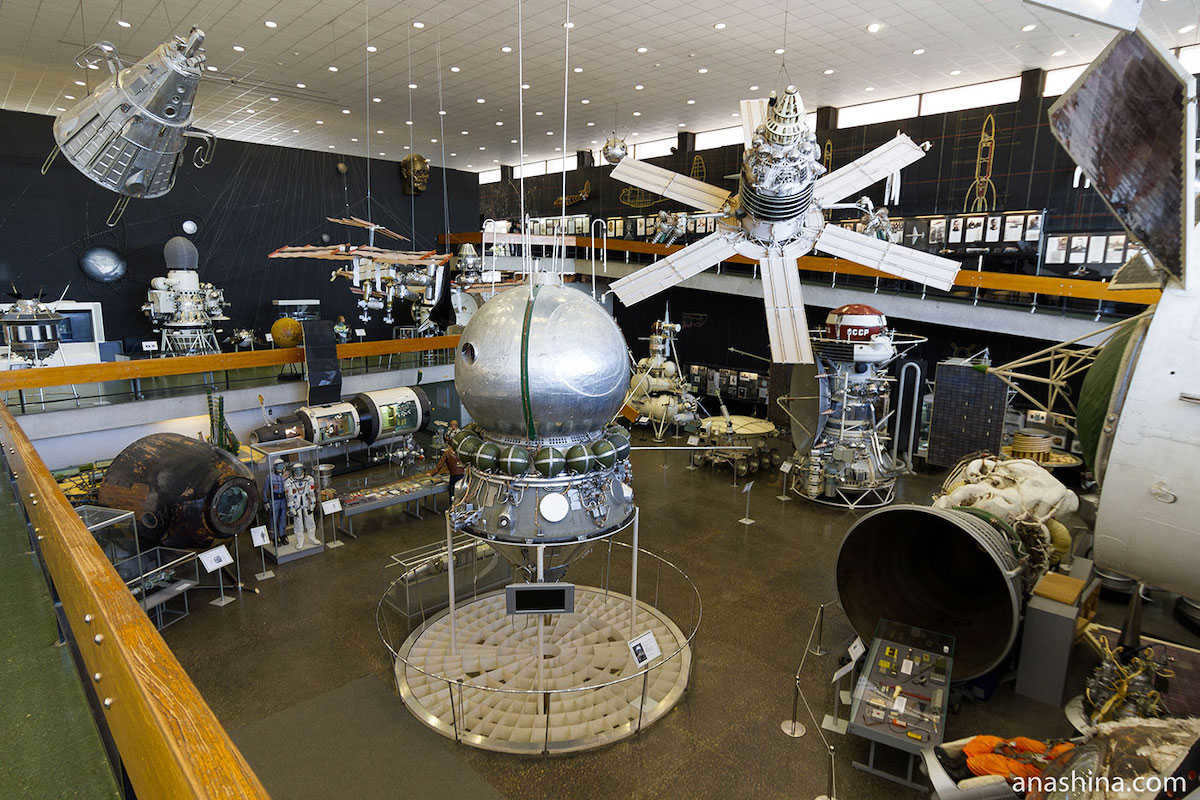
Crimean Astrophysical Observatory
The observatory was established in 1945 within a scientific town called Scientific, which is located an hour’s drive from Simferopol. One of the asteroids in the main asteroid belt is named after the observatory, known as KRAO. The primary part of the observatory is situated on the southern slope of Sel-Bukhra mountain, which effectively shields against external light, protects from excessive dust, and provides optimal conditions for sky observation. The observatory boasts a total of 17 operational telescopes, some of which are spread across the Scientific territory and may even be concealed within the forests.
Excursions are available at the Crimean Observatory, but they must be arranged in advance. The excursions are held in the late evening, allowing visitors to enjoy a clear view of the magnificent night sky. If visitors wish, they have the option to stay overnight on the premises of the Observatory. The town surrounding the Observatory offers a well-developed infrastructure with various cafes, parks, and hotels.
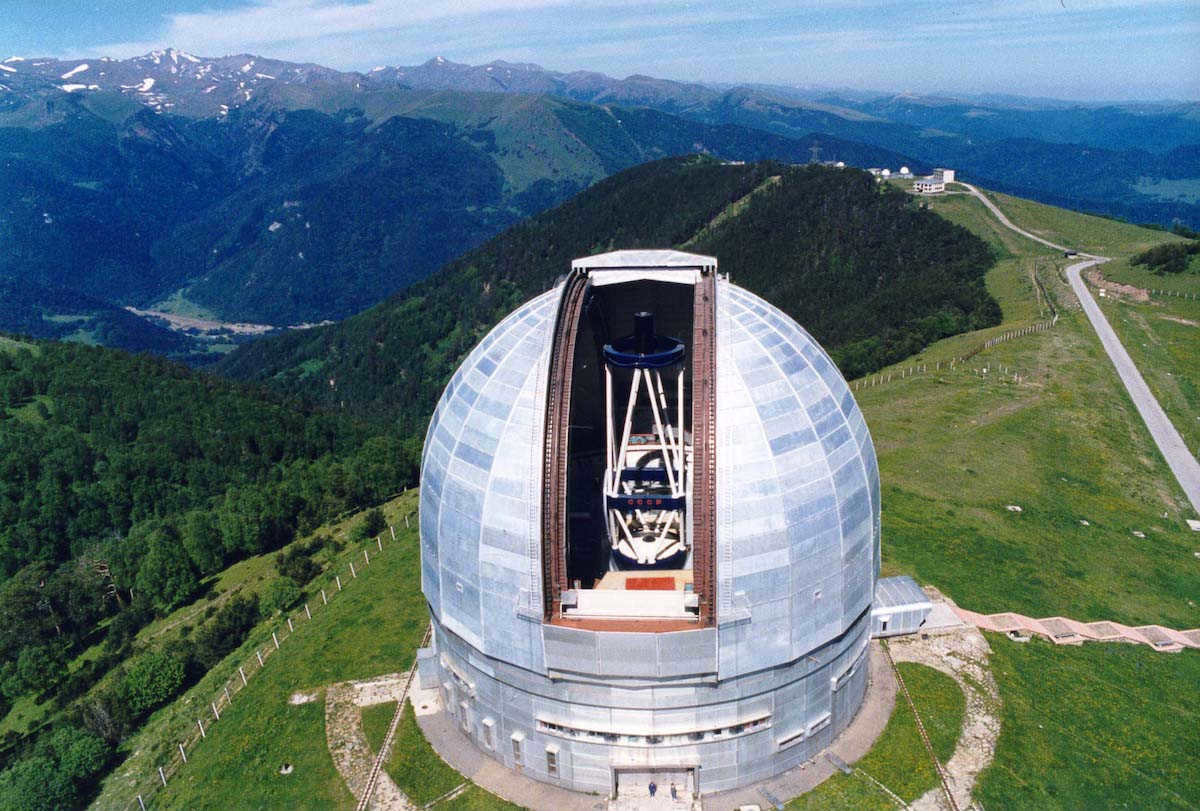
Vladimir planetarium
The Vladimir Planetarium was established in 1962, just one year after the historic first human flight into space. Those who visit the planetarium will have the opportunity to explore the potential for life on nearby planets and in various other regions of the universe. They can also learn to identify constellations and even participate in poetry evenings beneath the dome’s celestial sky. Alongside lectures on astrology and astronautics, the planetarium also offers presentations on topics such as ecology, biology, geography, and history. These lectures are both educational and entertaining, providing children with the opportunity to expand their knowledge beyond the confines of their school curriculum.
Exploring the Universe from the Comfort of Home
For individuals who are unable to journey to nearby planetariums or simply prefer to gaze at the cosmos without any restrictions, there exist online platforms that offer the unique experience of directly observing the celestial expanse. Geocam, a website dedicated to this purpose, provides live streams of Earth and outer space captured by satellite-mounted cameras. Certain broadcasts even offer the option to listen to accompanying audio.
With Cosmos-online, you have the opportunity to track the cameras aboard the International Space Station. The live stream is managed by NASA. The cameras capture breathtaking views of the Earth, but only during the astronauts’ designated rest periods. The rest of the time, the cameras are needed for important work, and a screensaver displaying the current position of the station is broadcasted. If you’re eager to catch a glimpse of our planet, it’s important to calculate the time difference: the astronauts on the ISS operate on Greenwich Mean Time, which is three hours behind Moscow.
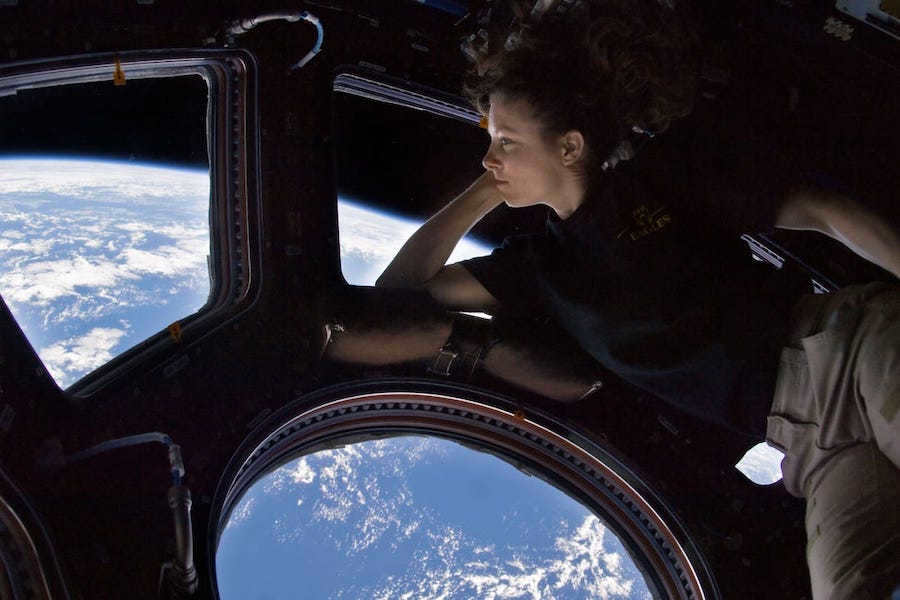
If you are interested in observing space, you have the option of using telescopes. The Harvard-Smithsonian Center for Astrophysics offers a service where you can request a photo from any of their telescopes and have it delivered to you. However, please note that there may be a waiting period for the photo to be taken, as this process can take some time.
For a more immediate viewing experience, there are paid portals such as iTelescope and Slooh that allow you to watch live feeds from telescopes. These portals typically require a monthly subscription fee of around $5. Additionally, for an extra cost, you can even have control over the telescope and get a taste of what it’s like to be a real astronomer.
The hours of operation for the Harvard-Smithsonian Center for Astrophysics are from 10:00 a.m. to 9:00 p.m., with Tuesdays being the designated day off. If you happen to visit during the days of the Planetarium, you can also enjoy the “Retro Café” from 10:00 to 20:00.
+7 (495) 221-76-90
Planetarium JSC © 2017. Moscow, Sadovaya-Kudrinskaya street 5, building 1
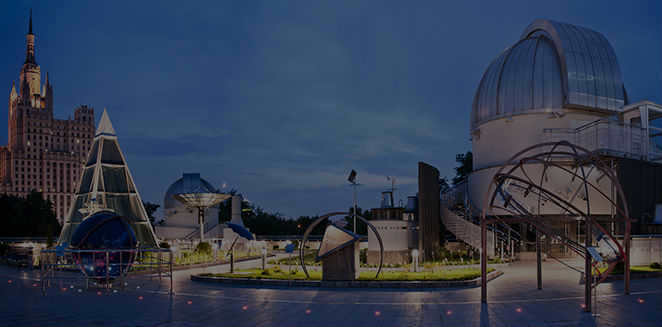
Sky Park
Situated in Moscow, Sky Park is a one-of-a-kind attraction that offers public access to a unique collection of ancient and modern instruments dedicated to the study of the Universe. It is considered to be the successor of the seven legendary cities of Urania, including the Egyptian Valley of the Kings, Stonehenge, Alexandria Observatory, Uranienburg, Pulkovo, Mount Palomar, and Baikonur.
Originally built in 1947 to celebrate the Day of Moscow, Sky Park was designed and constructed by a team of renowned scientists and architects, including Prof. M.E.Nabokov, Prof. K.L.Baev, U.Z.Gindin, A.B.Polyakov, and R.I.Tsvetov.
In recent years, Sky Park has undergone extensive restoration and modernization under the guidance and supervision of Stanislav Shirokov, resulting in a state-of-the-art facility that continues to inspire and educate visitors about the wonders of the Universe.
The Sky Park is a unique combination of an astronomical observatory and an open-air museum, housing a variety of astronomical instruments and tools. It is considered a landmark of the Moscow Planetarium and was originally conceived by Moscow astronomers and Planetarium staff in 1939. The plan to build this complex was delayed due to the outbreak of the Great Patriotic War in 1941, but it was eventually opened to the public in 1947, coinciding with the 800th anniversary of Moscow. The design and concept of the Sky Park draws inspiration from ancient stellar abodes such as the temple complex at Heliopolis, Stonehenge in England, the observatory-museum in Alexandria, and many others, making it a truly unique and historic site.
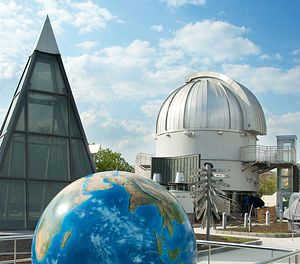
During the renovation process, the old instruments were recreated and new exhibits were added. The Sky Park has also received models of some items from prominent celestial civilizations around the world.
The exhibits in the Sky Park are organized based on the excursion routes, with scales and dials that are illuminated by sunlight, providing an open view of the horizon and the main sections:
- Classical Astronomy
- Solar Clocks
- Ancient Astronomy
- Telescopic Astronomy
- Solar Energy
A remarkable assortment of artifacts can be found at the Sky Park, including sundials ranging from massive square clocks to small garden timepieces. Visitors can also marvel at the rotating silver domes of observatory towers, the arcs of celestial spheres, the Indian winged ladder to the sky known as the Samrat Yantra, the stone ring of Stonehenge, the pyramid of Khufu (Cheops), as well as terrestrial and celestial globes, a polar umbrella, an armillary sphere, a geoscope, and the Moscow meridian. This is just a fraction of the captivating exhibits that make up the Sky Park, a picturesque tribute to the history of our understanding of the Earth and the sky.
Within the park, a variety of instruments are available to track the position of the Sun, Moon, planets, and stars above the Moscow horizon. Additionally, visitors have the opportunity to delve into the fascinating history of astronomy and Earth sciences.
During the tour, participants will have the opportunity to learn about the fundamentals of classical astronomy, as well as explore ancient and modern astronomical devices and instruments. They will also be able to take part in observations and learn basic methods of independent orientation using the horizon, the Sun, and the stars. This experience is especially beneficial for students who are part of the Planetarium’s astronomical circles, as they can use the Park’s equipment for educational purposes and conduct accurate observations and measurements.
In addition to public talks and observatory visits, the Sky Park also offers educational excursions on various topics including natural history, astronomy, astronautics, and physics.
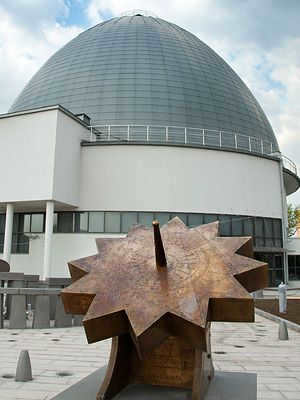
Visiting the Sky Park offers a unique opportunity to witness the progression of mankind’s development through the utilization of observations, experience, and knowledge for practical purposes. This includes determining the different aspects of the horizon, measuring time, and navigating through space, all of which were essential for survival and daily life. The Sky Park provides a one-of-a-kind learning experience, offering knowledge and skills that cannot be found elsewhere, and remain relevant even in contemporary times.
The Sky Park functions as a Solar City, where the exhibits work in harmony with the celestial bodies, showcasing and unveiling the principles of the sky through ancient devices.
On the Sky Park premises, you can find two observatory towers – a big one and a small one.
The big observatory boasts a 30-cm refractor created by Carl Zeiss Jena, serving as the main observation tool for the Planetarium. This refractor is specially designed for conducting mass observations of various celestial objects, including the Sun, the Moon, Earth group planets, giant planets, nebulae, globular and scattered star clusters, and even distant galaxies.
Depending on the time of year, visitors have the opportunity to enjoy different sky views. Observations are carried out only when the weather is clear.
The images captured by the telescope can be broadcasted in the Star and Conference Hall or even live on television.
The interior of the big tower is arranged and equipped to provide information about the telescope’s design, operation, additional equipment, and radiation receivers.
The small observatory features a Ritchie-Cretien system reflector measuring 40 cm, which is ideal for conducting more advanced observations and research. It comes equipped with all the necessary tools and resources for remote access and subsequent analysis of the collected data.
The sky park operates from May to September between 11:00 and 21:00. The park is closed on Tuesdays.
- Separate tickets are required for admission. Individual tickets can only be purchased on the day of the visit and availability is subject to weather conditions.
- Visiting the Sky Park is only possible after the session in the Great Hall of Stars. Access to the park is not permitted after the 20:00 session.
Opening hours: 11.00 a.m. to 9.00 p.m.
Day off: Tuesday
You have the opportunity to visit the Astroplatform either after the session in the Big Star Hall or by purchasing a separate ticket.
The Astroplatform closes at 8:00 p.m. after the session.
Programs Available
Perfect for a unique and informative getaway with your family, a group of friends, or colleagues.
Opening hours: 10:00 a.m. to 9:00 p.m.
Day off: Tuesday
“Retro Café”: open during Planetarium days from 10:00 a.m. to 8:00 p.m.
+7 (495) 221-76-90
Planetarium JSC © 2017. Moscow, Sadovaya-Kudrinskaya str. 5, p. 1
We are kicking off the season of tours at the magnificent Observatory!
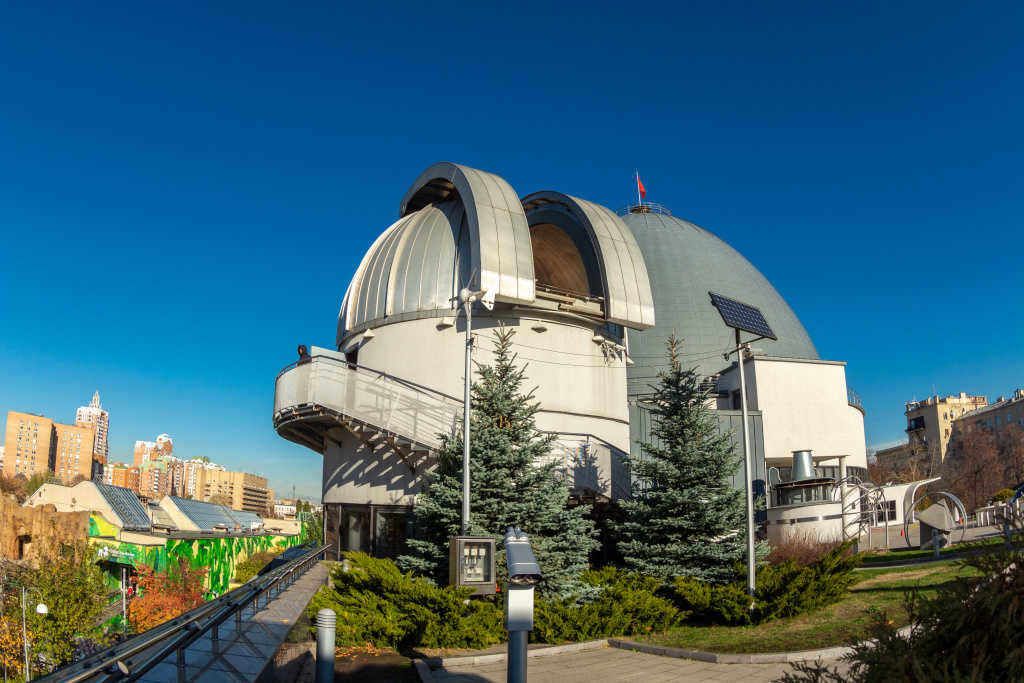

Date: 18.05.2023
We are pleased to inform you that this upcoming weekend, on May 20-21, the Great Observatory of the Moscow Planetarium will open its doors and welcome visitors once again. The main attraction of the observatory is the Zeiss 300 refractor telescope, which is known for its exceptional observing capabilities.
During the winter period, the observatory was closed to protect its delicate mechanisms from the harsh subzero temperatures. However, with the arrival of spring, the observatory underwent a thorough renovation, ensuring that both the facility itself and the equipment inside are in optimal condition. We are now fully prepared to provide an unforgettable experience for all our guests!
What makes the Great Observatory so special?
The Great Observatory at Sky Park features a one-of-a-kind 300-millimeter Karl Zeiss Jena refractor telescope.
Originally manufactured in Germany in the mid-20th century, the telescope was first installed in the 9-meter observatory tower at the Moscow Planetarium’s Astronomical Site and became operational in 1989.
From 1990 to 2002, regular observations were conducted at the Planetarium’s observatory, which earned it the status of a public observatory. Not only astronomy enthusiasts, but also the general public could visit and explore this remarkable facility.
In 2002, due to the start of reconstruction works at the Planetarium, the telescope was dismantled along with the observatory tower.
The Great Observatory was reopened in August 2011, just after the Planetarium had its grand opening. The telescope at the Great Observatory is specifically designed for observing a wide variety of celestial objects, including the Sun, the Moon, planets, nebulae, star clusters, and galaxies.
Learn more about the tour
Discover the inner workings of the Great Observatory and witness the fascinating observations conducted by Moscow Planetarium astronomer Nikita Shamorgin.
Your guide will also provide insights into the different types of telescopes and the various tasks they accomplish.
Weather permitting, visitors will have the opportunity to explore the structure of the Sun, the most significant star in our solar system. If the skies in Moscow are clear, you can even engage in real astronomical observations and observe the Sun through a telescope.
Tickets for the tour can only be purchased on the same day at the Planetarium ticket office.
The Great Observatory is open on weekends, specifically on Saturday and Sunday.

